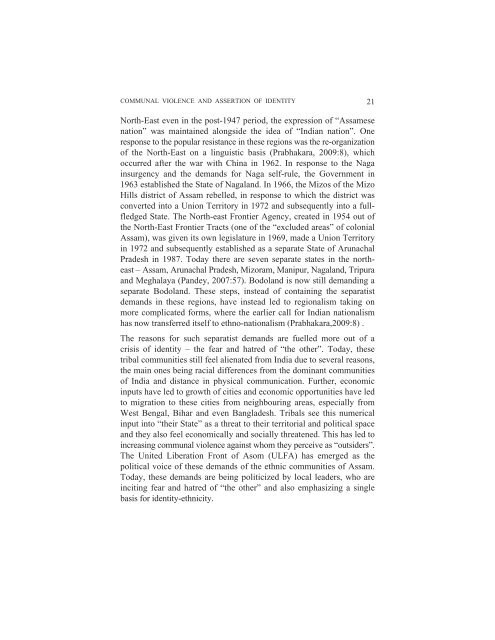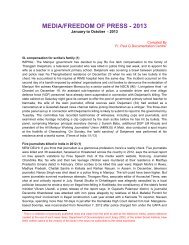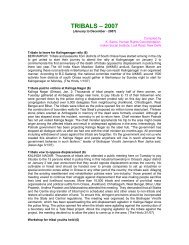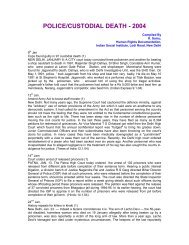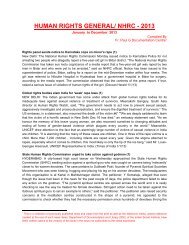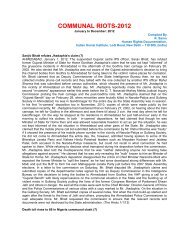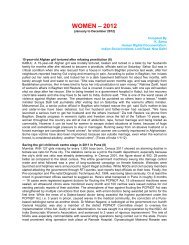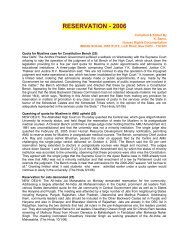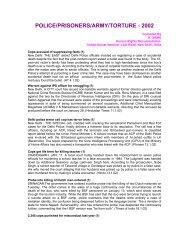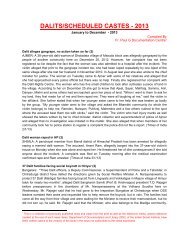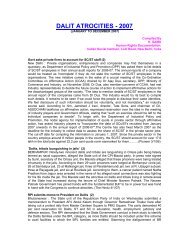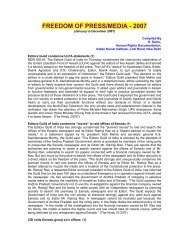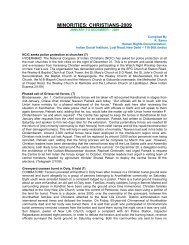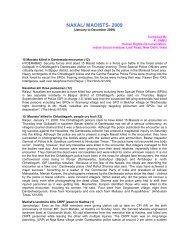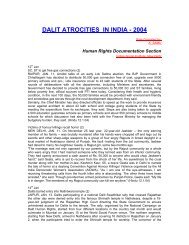Communal Violence and Assertion of Identity - Indian Social Institute
Communal Violence and Assertion of Identity - Indian Social Institute
Communal Violence and Assertion of Identity - Indian Social Institute
Create successful ePaper yourself
Turn your PDF publications into a flip-book with our unique Google optimized e-Paper software.
COMMUNAL VIOLENCE AND ASSERTION OF IDENTITY 21<br />
North-East even in the post-1947 period, the expression <strong>of</strong> “Assamese<br />
nation” was maintained alongside the idea <strong>of</strong> “<strong>Indian</strong> nation”. One<br />
response to the popular resistance in these regions was the re-organization<br />
<strong>of</strong> the North-East on a linguistic basis (Prabhakara, 2009:8), which<br />
occurred after the war with China in 1962. In response to the Naga<br />
insurgency <strong>and</strong> the dem<strong>and</strong>s for Naga self-rule, the Government in<br />
1963 established the State <strong>of</strong> Nagal<strong>and</strong>. In 1966, the Mizos <strong>of</strong> the Mizo<br />
Hills district <strong>of</strong> Assam rebelled, in response to which the district was<br />
converted into a Union Territory in 1972 <strong>and</strong> subsequently into a fullfledged<br />
State. The North-east Frontier Agency, created in 1954 out <strong>of</strong><br />
the North-East Frontier Tracts (one <strong>of</strong> the “excluded areas” <strong>of</strong> colonial<br />
Assam), was given its own legislature in 1969, made a Union Territory<br />
in 1972 <strong>and</strong> subsequently established as a separate State <strong>of</strong> Arunachal<br />
Pradesh in 1987. Today there are seven separate states in the northeast<br />
– Assam, Arunachal Pradesh, Mizoram, Manipur, Nagal<strong>and</strong>, Tripura<br />
<strong>and</strong> Meghalaya (P<strong>and</strong>ey, 2007:57). Bodol<strong>and</strong> is now still dem<strong>and</strong>ing a<br />
separate Bodol<strong>and</strong>. These steps, instead <strong>of</strong> containing the separatist<br />
dem<strong>and</strong>s in these regions, have instead led to regionalism taking on<br />
more complicated forms, where the earlier call for <strong>Indian</strong> nationalism<br />
has now transferred itself to ethno-nationalism (Prabhakara,2009:8) .<br />
The reasons for such separatist dem<strong>and</strong>s are fuelled more out <strong>of</strong> a<br />
crisis <strong>of</strong> identity – the fear <strong>and</strong> hatred <strong>of</strong> “the other”. Today, these<br />
tribal communities still feel alienated from India due to several reasons,<br />
the main ones being racial differences from the dominant communities<br />
<strong>of</strong> India <strong>and</strong> distance in physical communication. Further, economic<br />
inputs have led to growth <strong>of</strong> cities <strong>and</strong> economic opportunities have led<br />
to migration to these cities from neighbouring areas, especially from<br />
West Bengal, Bihar <strong>and</strong> even Bangladesh. Tribals see this numerical<br />
input into “their State” as a threat to their territorial <strong>and</strong> political space<br />
<strong>and</strong> they also feel economically <strong>and</strong> socially threatened. This has led to<br />
increasing communal violence against whom they perceive as “outsiders”.<br />
The United Liberation Front <strong>of</strong> Asom (ULFA) has emerged as the<br />
political voice <strong>of</strong> these dem<strong>and</strong>s <strong>of</strong> the ethnic communities <strong>of</strong> Assam.<br />
Today, these dem<strong>and</strong>s are being politicized by local leaders, who are<br />
inciting fear <strong>and</strong> hatred <strong>of</strong> “the other” <strong>and</strong> also emphasizing a single<br />
basis for identity-ethnicity.


